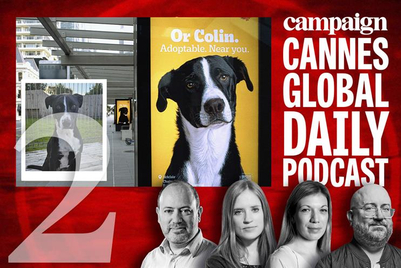
The exchange will enable advertisers to reach audiences across multiple leading music streaming services and radio broadcasters in Singapore, Malaysia, Hong Kong, Thailand, Philippines, and Indonesia.
At launch, the exchange has more than 200 media players signed on across the Asia-Pacific region including Malaysia’s Media Prima and Singapore’s Media Safra.
The company is finalising partnerships with Singpore’s Media Corp and SPH, with more announcements on global streaming partners expected in January.
Graham Christie, CEO and co-founder of Big Mobile, said that the company is dedicated to “innovating and moving the market forward”, adding that a2x is the “perfect compliment” to display and video channels, providing the premium visibility (audibility?) that brands seek in a clutter-free environment.
According to the independent mobile specialist, with an estimated 1.1 million Singaporeans, 4.8 million Malaysians and 35 million Indonesians streaming music each month, a2x will offer advertisers the ability to deliver messaging to this large population in a one-to-one setting via digital audio advertising.
Earlier in August, Big Mobile signed a strategic partnership with Triton Digital to launch an audio advertising exchange in Australia.
In a phone interview with Campaign Asia-Pacific, Christie said that to date, the response from the Australian market has been “overwhelmingly positive”. As audiences continue moving away from traditional broadcast radio to digital channels, advertisers are following where their consumers are going.
He declined to share further details as most of the pioneer clients are still in the midst of their first campaigns executed with the exchange.
“There’s been genuine demand and it’s an appealing proposition to brands,” he added. “They’ve found that there’s a lot of opportunities to be ‘the first’ to leverage this, which you don’t get often in digital media these days. So we’ve gotten requests such as category exclusives during our launch phase from quite a few brands.”
In addition, the exchange’s introduction to the region was driven by increasing customer demand that display, video and audio inventory sets be better integrated to offer robust audience access across different mediums.
“For example, at launch we have some audio inventory that comes bundled with a banner ad on a streaming partner’s platform,” he said. “This will allow consumers to both hear and engage with brand content. It opens up a whole new way of marketing on mobile and tablet devices.”
In the case of Southeast Asia, Christie said that with any new offering in the market, there will be a degree of client education required.
“But Southeast Asia is migrating rapidly to a programmatic reality,” he added. “Had a service like this launched three or four years ago, it would have needed a much longer runway for the proposition to be taken up by the market.”
Christie said clients already see the merits in having visibility into the audience they’re reaching out to and the operational efficiencies to be had from a cost perspective, thanks to familiarity with programmatic exchanges in the region for display ad and video inventory. “We’re certainly expecting take-up to be quicker.”
“What’s going be both interesting and critical,” he said. “Is how brands and advertisers react to this.”
Christie said that while the audio exchange can of course be used the same way as traditional radio, in terms of buying airtime in specific slots for a particular demographic, the real opportunities lie beyond that.
He added that there will be “two camps” of advertisers, those that will use the exchange the same way they use traditional radio in their marketing mix and those that will be more progressive in their execution.
“It would be interesting to see the incorporation of more mobile engagement mechanisms in campaigns such as location-based messaging,” he added.
“It would certainly entail a more elaborate campaign design but there’s certainly interest in such a strategy, especially when looking at this very real opportunity to stand out for doing so with a new medium,” said Christie.


.jpg&h=334&w=500&q=100&v=20250320&c=1)


.png&h=334&w=500&q=100&v=20250320&c=1)





.png&h=334&w=500&q=100&v=20250320&c=1)



.jpg&h=268&w=401&q=100&v=20250320&c=1)



